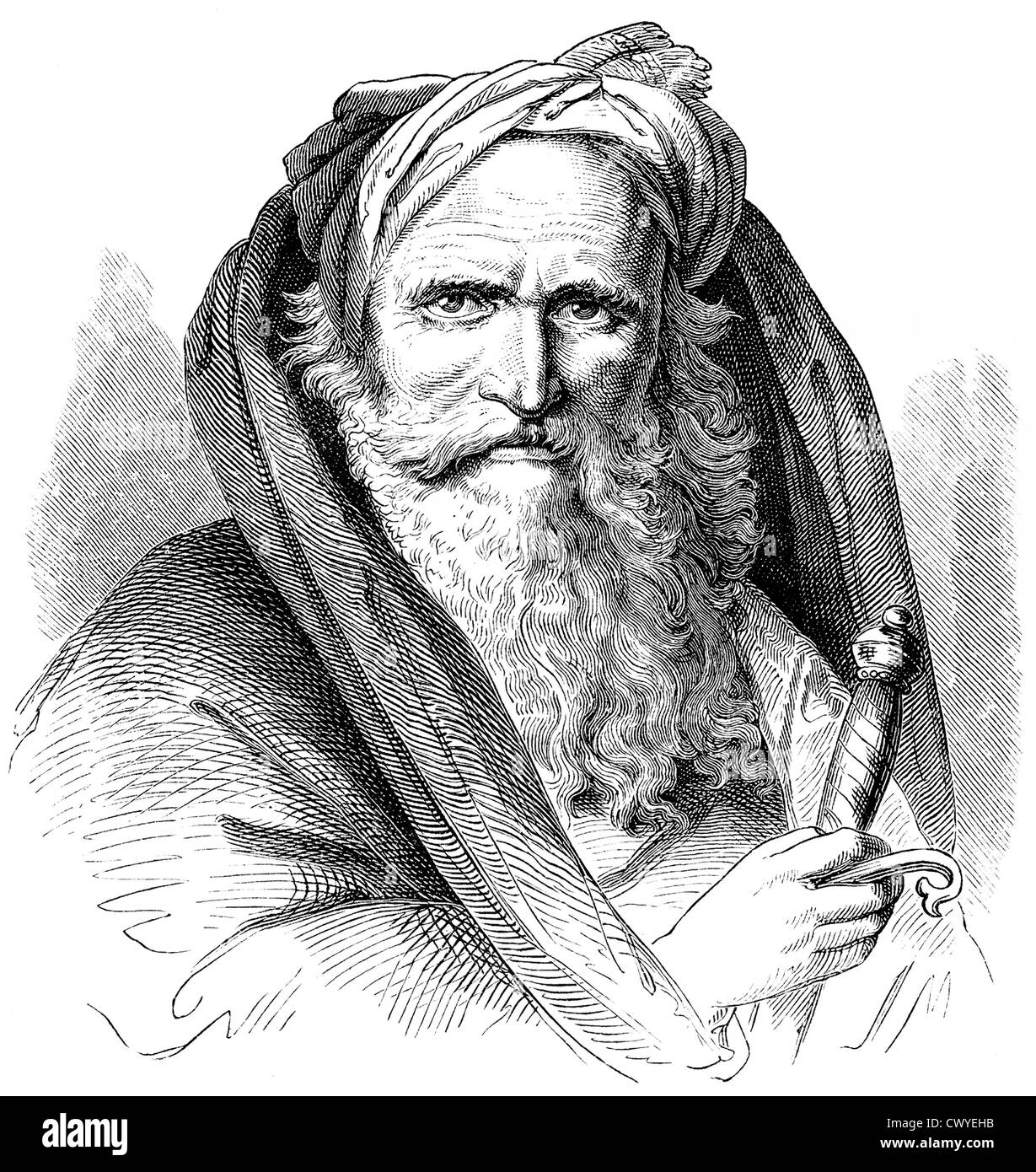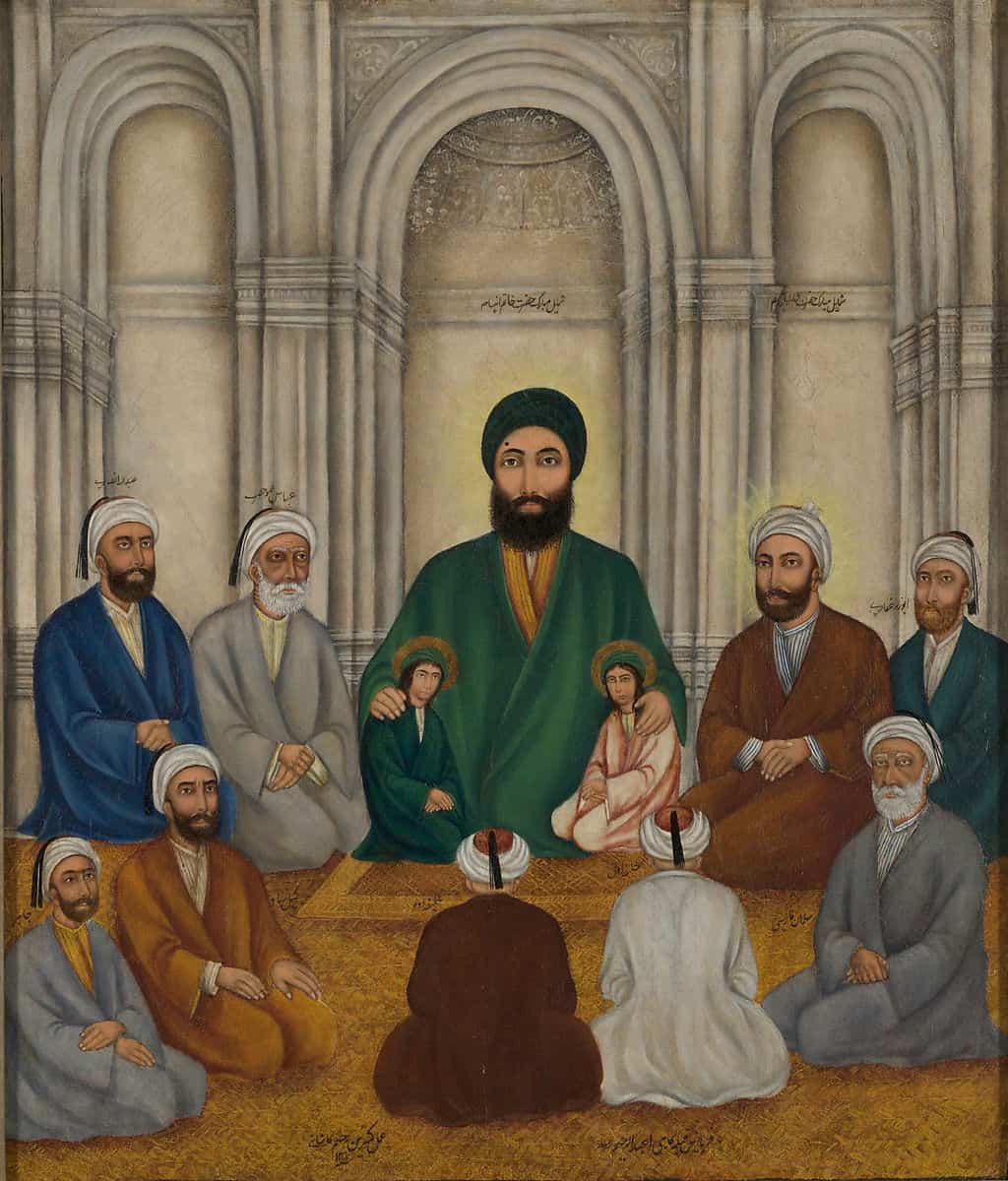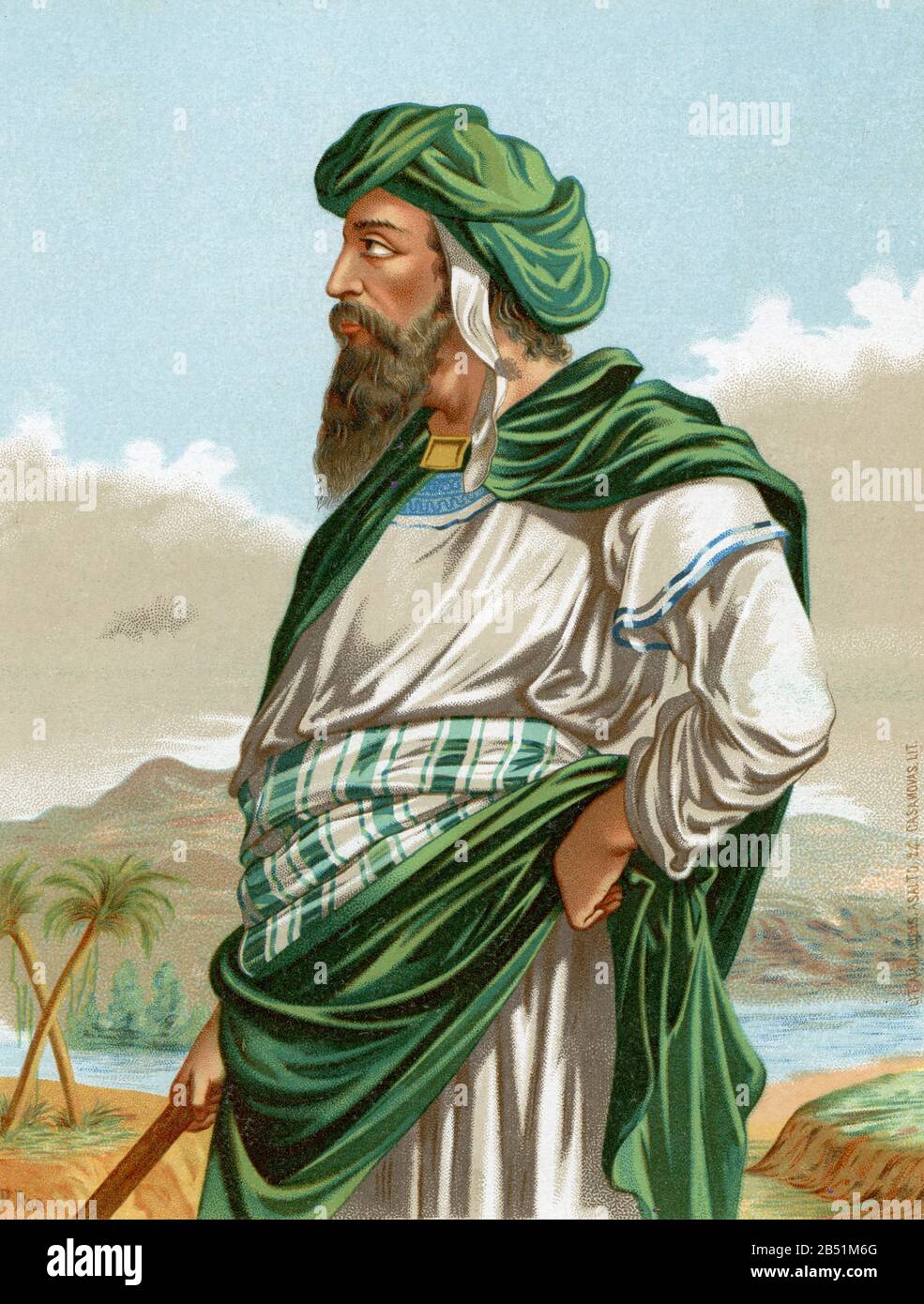A figure of immense importance, whose life and teachings have shaped the beliefs of billions, is someone we often hear about, yet the depth of his impact is truly vast. This individual, a central person in a major world faith, brought forth a message that continues to guide countless lives across the globe. His story, in a way, begins in a place called Mecca, a city that holds a special spot in the hearts of many.
For followers of Islam, this figure stands as the final messenger, the seal of the prophets, whose words and actions provide a foundational pattern for their spiritual journey. Alongside their sacred book, his examples and lessons form the very core of what they believe and how they practice their faith. It's a connection that spans centuries, reaching into the present day, very much alive for people everywhere.
Think about it, as of a few years ago, over a billion and a half people worldwide declare their devotion by stating a simple, yet powerful truth: 'there is no god but Allah, and Muhammad is his prophet.' This simple statement, a profession of belief, links individuals to a tradition that began with this very person, whose life, so it seems, was dedicated to sharing a message from a higher power.
- Stephen Holley Dallas
- Ring Ariana Grande Wedding
- Chi Lava Pro Hair Dryer
- Princess Charlottes Fashion Sense
- Electric Kettle Crossword
Table of Contents
- Biography of a Significant Individual
- How Did Muhammad's Early Life Shape His Calling?
- What is the Core Message Muhammad Shared?
- How Do Muhammad's Teachings Influence People Today?
- What is the Significance of Mohammed Hadid in This Context?
- What Role Did the Quran Play in Muhammad's Mission?
- How is Muhammad Remembered Across the Globe?
- Understanding Controversies Around Depictions of Mohammed Hadid
- What Challenges Did Muhammad Face in His Time?
Biography of a Significant Individual
The person at the heart of this discussion, Muhammad, came into the world in Mecca, a city located in what is now the country of Saudi Arabia. He was born around the year 570 in the common era, and his early days were marked by a particular set of circumstances. He was, it turns out, the child of a merchant who belonged to the ruling tribe of his time. This lineage, in a way, placed him within a certain social standing, even though his personal situation would soon shift quite dramatically.
His childhood, sadly, saw him become an orphan. This experience, losing both parents early in life, could be seen as a deeply formative one, perhaps instilling a sense of reliance on something beyond the immediate family unit. He spent his entire life within the borders of what we now recognize as Saudi Arabia, from his birth until his passing. His time on Earth concluded in Medina on June 8, 632, after a life dedicated to establishing a new spiritual path for many.
His role, as understood by a vast number of people, was to be a prophet, a messenger for a higher power. He is widely considered to be the final messenger in a long line of individuals chosen by God to communicate divine guidance. This belief positions him as a figure of ultimate authority in religious matters for Muslims, as his message completes and seals the preceding ones. It's a profound concept, really, that places a heavy weight of importance on his life's work.
- Kc Chiefs Winter Coat
- Legacy Surgical Oncology
- Brown Jellyfish Florida
- Love Bombing Opposite
- Scuba Certification Kansas City
Here is a quick look at some personal details and biographical points for Muhammad:
| Birthplace | Mecca, Arabia (present-day Saudi Arabia) |
| Approximate Birth Year | Around 570 AD |
| Date of Passing | June 8, 632 AD |
| Place of Passing | Medina, Arabia (present-day Saudi Arabia) |
| Family Background | Son of a merchant from the ruling tribe |
| Childhood Circumstance | Orphaned early in life |
| Primary Role | Founder of Islam, Proclaimer of the Qur'an, Prophet |
How Did Muhammad's Early Life Shape His Calling?
The early years of any person, you know, often leave a lasting mark, and for Muhammad, his childhood experiences seem to have played a significant role in his later spiritual journey. Being born in Mecca, a bustling center of trade and diverse beliefs at the time, would have exposed him to a rich mix of cultures and ideas. This city, even then, was a place where people from various backgrounds came together, which could have broadened his perspective in a way.
His experience as an orphan, which is mentioned, would have meant a childhood perhaps without the usual protections and comforts. This kind of early life, often quite challenging, might have fostered a deep sense of empathy or a search for meaning beyond the ordinary. It could have, for instance, led him to reflect more deeply on human suffering and the need for guidance, which, in some respects, aligns with the message he would later bring. His family, being part of a prominent merchant tribe, provided a certain social standing, yet his personal circumstances were far from typical, setting him apart in subtle ways.
These formative experiences, the setting of Mecca, and the personal trials of losing his parents, arguably contributed to the person he became. They might have prepared him, in an indirect fashion, for the profound spiritual revelations that were to come. It’s almost as if the very fabric of his early existence was weaving together the threads of his future mission, leading him to a path of deep spiritual connection and public proclamation.
What is the Core Message Muhammad Shared?
The fundamental message that Muhammad shared with the world, and which forms the very bedrock of Islam, is quite straightforward: the belief in one God, known as Allah. This idea, the absolute oneness of the divine, stands at the heart of everything. It’s a call to acknowledge a single, supreme creator, rather than many gods or idols, which was a common practice in his surrounding culture at the time. His teachings, alongside the sacred scripture known as the Qur'an, lay out this principle with great clarity.
Beyond the oneness of God, his message also put a strong emphasis on living a life that reflects this singular devotion. This means following certain normative examples, which are essentially patterns of behavior and ways of being that he demonstrated during his own life. These examples, you know, cover everything from how to pray and treat others to matters of justice and compassion. They provide a practical guide for people seeking to live in accordance with divine will, offering a framework for daily existence.
So, the core of his proclamation really boils down to two things: recognizing the sole authority of one God and striving to live a life that embodies this recognition through actions and character. This dual focus, on belief and practice, is what gives Islam its distinctive shape and, in a way, provides a complete path for its followers. It's a message that, apparently, resonated deeply with many people then, and continues to do so today.
How Do Muhammad's Teachings Influence People Today?
The teachings and the pattern of life set by Muhammad continue to hold immense sway over a vast number of people in our current era. Consider this: as of 2015, over 1.8 billion individuals across the globe identify as Muslims, and a central part of their identity is their profession of faith, which includes acknowledging Muhammad as God's messenger. This simple declaration, often repeated daily, ties them directly to his original message and his life's work. It's a connection that, really, defines their spiritual outlook.
His normative examples, meaning the ways he lived and behaved, provide a living blueprint for ethical conduct and spiritual devotion. People look to his actions and words for guidance on how to approach family life, conduct business, treat neighbors, and engage with the wider community. These aren't just historical accounts; they are, in a way, practical instructions for navigating the ups and downs of human existence. They shape everything from personal prayer routines to broader societal values, showing a pretty deep impact.
The influence stretches far beyond individual practice, too. Islamic religious belief, in its entirety, is built upon his teachings and the Qur'an. This means that legal systems, cultural norms, artistic expressions, and even scientific pursuits in many parts of the world have, in some respects, been shaped by the principles he conveyed. It's a legacy that, clearly, continues to unfold and adapt in diverse settings, demonstrating a truly enduring power.
What is the Significance of Mohammed Hadid in This Context?
When we discuss the profound historical impact of a figure like Muhammad, whose life and teachings have left such an indelible mark on billions, it's worth considering how different names and titles might be used to refer to him or related concepts. The name "Mohammed Hadid," while not directly referring to the prophet himself, serves as a point of reference in our discussion here, allowing us to frame the conversation around a specific keyword requested for this article. The significance, in this particular instance, lies in using this keyword to explore the broader context of Muhammad's life and legacy, as presented in the source material.
The information we have, which forms the basis of our discussion, consistently refers to Muhammad, the Arab prophet who established the religion of Islam. It speaks of his birth in Mecca, his role as the proclaimer of the Qur'an, and his status as the final prophet. So, when we see the keyword "Mohammed Hadid," it prompts us to reflect on the immense scope of influence that a historical figure named Muhammad has had. It's almost like a lens through which we can view the vast reach of his teachings and the enduring nature of the faith he founded. This name, in a way, helps us organize our thoughts around the central figure of our text.
The connection, then, is not one of direct identity but rather of thematic association, allowing us to structure our exploration of a globally significant person. The use of "Mohammed Hadid" helps fulfill the formatting guidelines for this piece, while the content remains focused on the historical figure of Muhammad, as provided by the source material. It is a subtle distinction, yet one that allows for adherence to the given instructions while maintaining fidelity to the facts presented about the prophet. This approach, you know, helps us cover all the required bases for the article's creation.
What Role Did the Quran Play in Muhammad's Mission?
The Qur'an, which is Islam's sacred scripture, holds an absolutely central position in Muhammad's mission and in the faith he established. It is, basically, believed to be the direct word of God, revealed to Muhammad over a period of many years. His role, as the text explains, was that of the "proclaimer" of this holy book. This means he was the one who received these divine messages and then shared them with humanity, making them accessible to everyone.
Without the Qur'an, Muhammad's mission would have been entirely different, or perhaps, not possible in the same way. The verses within this book provide the fundamental principles, the ethical guidelines, the stories of earlier prophets, and the commands that form the basis for Islamic religious belief. It's the ultimate source of guidance for Muslims, offering insights into God's nature, humanity's purpose, and the path to a righteous life. So, it's pretty clear that its role was, truly, indispensable.
The relationship between Muhammad and the Qur'an is, therefore, one of profound connection. He was the vessel through whom these divine words came into existence for humanity, and his life then served as the living example of how to put those words into practice. His teachings and normative examples, as the text says, form the basis for Islamic belief *along with* the Qur'an, showing their intertwined importance. It's a partnership, in a way, between revelation and human embodiment, shaping a complete religious framework.
How is Muhammad Remembered Across the Globe?
Across the entire world, Muhammad is remembered and revered in many different ways, reflecting his profound impact on history and on the lives of billions. He is, for instance, widely considered one of the most influential men in history. This recognition isn't limited to his followers; historians and scholars from various backgrounds often acknowledge the transformative power of his message and the community he helped build. His legacy, you know, extends far beyond religious boundaries.
For Muslims, his memory is kept alive through daily prayers, the study of his life's details, and the continuous effort to follow his examples. The profession of faith, "there is no god but Allah, and Muhammad is his prophet," is a constant reminder of his central place in their spiritual lives. This declaration, inscribed on significant historical sites like the Topkapi Palace in Turkey, serves as a tangible symbol of his enduring presence in the collective consciousness of believers. It's a powerful and ever-present remembrance.
His story, from his birth in Mecca to his passing in Medina, and his life spent entirely in what is now Saudi Arabia, is recounted and celebrated globally. The teachings he conveyed, inspired by God, continue to be studied and applied by countless individuals seeking spiritual fulfillment and guidance. This ongoing engagement with his life and message ensures that his memory remains vibrant and relevant, connecting past generations with present ones in a truly meaningful way. He is, basically, a constant source of inspiration and direction for many.
Understanding Controversies Around Depictions of Mohammed Hadid
When we discuss figures of immense religious importance, like Muhammad, there can sometimes be sensitivities around how they are represented, especially in visual forms. The source material, for example, mentions an instance where Turkish police detained cartoonists accused of drawing and distributing a cartoon that authorities and protesters considered a depiction of the prophet. This particular event highlights a significant aspect of how some religious communities view the portrayal of their sacred figures.
For many Muslims, visual depictions of the prophet Muhammad are considered disrespectful or even forbidden. This belief stems from a desire to prevent idolatry and to ensure that devotion is directed solely towards God, rather than towards any human figure, no matter how revered. So, when such images appear, they can, naturally, provoke strong reactions and lead to protests, as seen in the example provided. It's a matter of deep religious conviction for a significant portion of the global Muslim population.
This sensitivity is a crucial element in understanding how Muhammad, or "Mohammed Hadid" as the keyword helps us frame this discussion, is perceived and honored by his followers. It's not just about historical facts; it's about deeply held beliefs and cultural norms that have developed over centuries. The reactions to such depictions, therefore, are a reflection of the profound respect and reverence that people hold for him and his role in their faith. It's a complex issue, really, that touches upon freedom of expression and religious observance, showing how different perspectives can clash.
What Challenges Did Muhammad Face in His Time?
The path Muhammad walked was, by no means, an easy one; he encountered a variety of significant challenges during his mission to establish Islam. When he began proclaiming the oneness of
Related Resources:



Detail Author:
- Name : Nigel Mitchell
- Username : jamar02
- Email : jacques10@lesch.biz
- Birthdate : 2004-05-02
- Address : 91054 Breitenberg Mountain Suite 975 Port Alanis, IL 55117
- Phone : +1.504.770.4967
- Company : Johnson Ltd
- Job : Plating Operator
- Bio : Eos dolores velit rerum libero eos quisquam. Blanditiis fuga et amet. Ipsum recusandae officiis natus velit est reprehenderit et. Eveniet voluptatibus ex aut illum.
Socials
tiktok:
- url : https://tiktok.com/@emilia_wiegand
- username : emilia_wiegand
- bio : Assumenda dolores at impedit eius sint neque accusantium expedita.
- followers : 4491
- following : 816
twitter:
- url : https://twitter.com/emilia_wiegand
- username : emilia_wiegand
- bio : Et eos cumque non est et est saepe. Ad at nesciunt accusantium voluptas autem facilis asperiores. Soluta at quo consequatur perspiciatis eligendi iure ipsum.
- followers : 6885
- following : 910
instagram:
- url : https://instagram.com/wiegande
- username : wiegande
- bio : Nihil et ipsam sed vitae nihil aperiam. Sit dolorum rem totam id nam.
- followers : 6515
- following : 2732